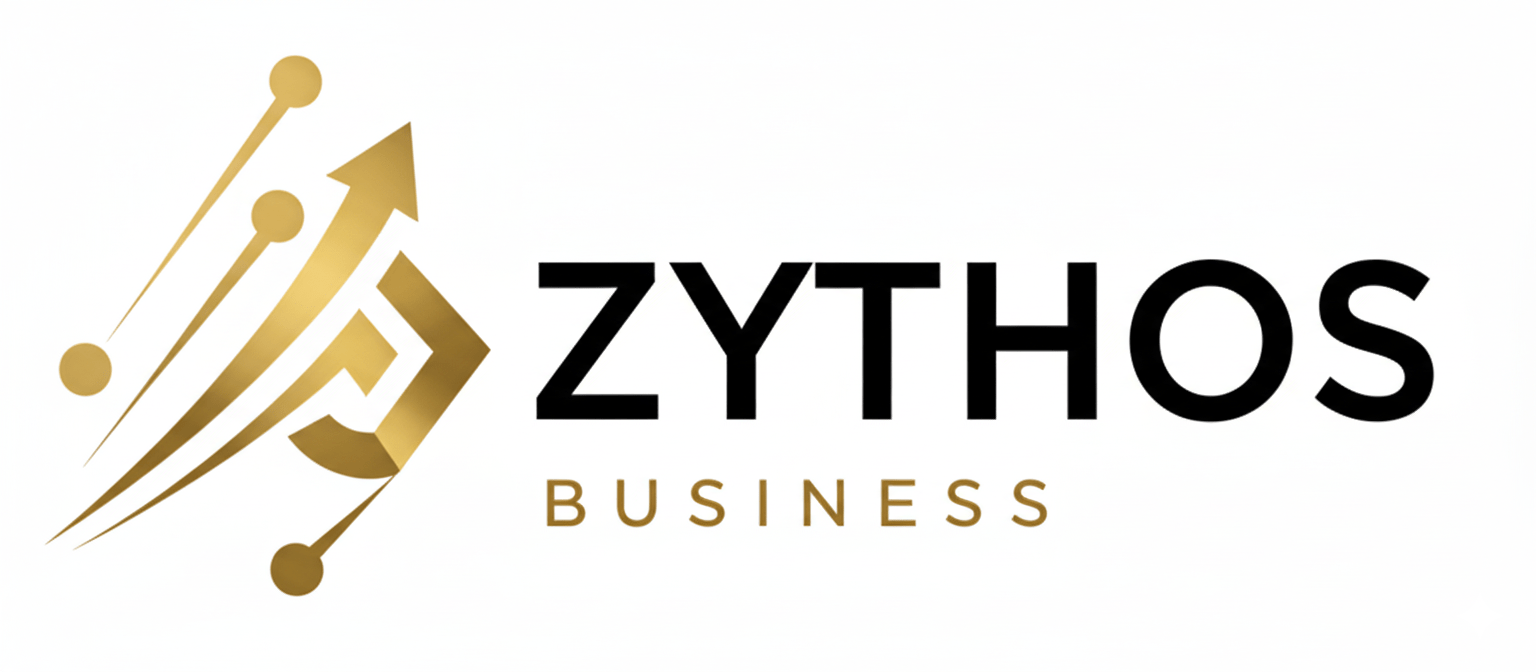The labor market for programming professionals in Spain is at an unprecedented crossroads, defined by a deep and apparent contradiction. On one hand, headlines announce an alarming drop in demand for new talent, with a contraction in job offers exceeding 30% since the massive emergence of generative artificial intelligence (AI). This figure, in isolation, could be interpreted as a sign of an impending sector-wide crisis. However, a deeper analysis reveals a contrasting and much more complex reality: the Spanish tech sector enjoys robust health, with record employment figures surpassing 400,000 programmers in the third quarter of 2024, representing a year-over-year growth of 16.4%.
This dichotomy is not a statistical error but the manifestation of a tipping point. The market is not shrinking; it is transforming at a dizzying pace. Generative AI, embodied in tools like ChatGPT or GitHub Copilot, is not acting as a mere job destroyer but as the main catalyst for a fundamental restructuring of the profession. A seismic shift is underway that alters the nature of demand, moving value from the ability to write code to the skill of designing, supervising, and orchestrating intelligent systems. Far from simple replacement, we are witnessing a strategic redistribution of investment toward profiles with higher added value and specialization in AI. The media panic, focused exclusively on the drop in job offers, conceals a narrative of structural readjustment where the real risk is not mass unemployment, but the obsolescence of skills and the growing gap for highly specialized talent.
This report delves into the heart of this paradox to offer a comprehensive view of the new paradigm. It will analyze the factors explaining this apparent contradiction, evaluate the real impact of AI on productivity and different professional experience levels, outline the metamorphosis of the programmer’s role, and examine Spain’s unique position in the global context. Finally, it will propose key strategies that professionals, companies, and institutions must adopt to successfully navigate this new era of software engineering.
Anatomy of a Market in Transition: From Euphoria to Containment
To understand the current transformation, it is imperative to analyze in detail the figures that shape this new scenario. The narrative of a market in crisis, driven by the drastic fall in vacancies, clashes head-on with the data on employment and sector stability. This section breaks down both sides of the equation and explores a third, more psychological and strategic factor that modulates market behavior: the “Great Tech Retention.”
The Collapse of Apparent Demand: Analysis of Job Offers
The most visible and commented-on data point is the notable contraction in demand for new programmers. In a span of three years, coinciding with the popularization of generative AI, job offers for software developers have fallen by 31%. This decline has caused their share of total job postings in Spain to shrink significantly, from a peak of 7.9% to a more modest 5.4%.
It is crucial to note that this impact has not been uniform across the entire tech sector. While roles focused on code writing suffered this sharp contraction, other ICT profiles, such as network installation and maintenance technicians or database managers, experienced a much smaller decline, dropping from 5.6% to 5.1% of total offers. This difference underscores that the epicenter of the disruption is specifically in the field of software development, where generative AI tools have a more direct and immediate application.
The Reality of Employment: A Sector in Full Growth
In stark contrast to the drop in job offers, employment figures paint a picture of growth and stability. The Spanish tech sector has been an engine of job creation over the last decade, generating 494,000 new positions since 2013. Revealingly, nearly half of them, about 240,000, emerged after 2020, during the acceleration of post-pandemic digitalization.
Focusing on the programming profession, the data is equally positive. The number of employed individuals surpassed the 400,000 mark in the third quarter of 2024, consolidating a trend of sustained growth. Furthermore, the sector is characterized by high job stability. According to a report by Randstad Research, 95% of salaried programmers in Spain have a permanent contract, a rate much higher than the national average. This data shows that, despite a lower need for new hires, companies are not reducing their workforces but are instead consolidating them.
| Indicator | Value | Reference Period | Source(s) |
| Change in Job Offers (Programmers) | $-31\%$ | 2022-2025 | Eurostat (cited in elEconomista.es) |
| Share of Total Published Offers | From $7.9\%$ to $5.4\%$ | 2022-2025 | Eurostat (cited in elEconomista.es) |
| Total Number of Employed (Programmers) | $>400,000$ | Q3 2024 | Randstad Research |
| Year-over-Year Employment Growth | $+16.4\%$ | Q3 2024 vs Q3 2023 | Randstad Research |
| Percentage of Permanent Contracts | $95\%$ | Q3 2024 | Randstad Research, INE |
| New Tech Jobs Created | $240,000$ | Post-2020 | Cotec Foundation |
Table 1: Key Indicators of the Programmer Market in Spain (2022-2025). This table consolidates the data illustrating the market paradox: a sharp drop in new offers coexisting with robust and stable employment growth.
The “Great Tech Retention” and the “Hiring Freeze” Phenomenon
The apparent contradiction between fewer offers and more employment is partly explained by a shift in market dynamics. After years of an intense “war for talent” with very high turnover, the sector has entered a phase of greater restraint. On one hand, a “Great Tech Retention” phenomenon is observed: in a context perceived as more uncertain and hostile, with news of mass layoffs in the United States, tech professionals in Spain tend to stay in their current jobs rather than actively seeking new opportunities. This lower voluntary mobility reduces the number of vacancies that companies need to fill.
On the other hand, companies themselves have changed their strategy. After a cycle of massive investment in digitalization, many companies have activated a “hiring freeze.” The focus has shifted from expanding teams to optimizing the profitability of investments already made. Now, hiring is only for positions considered critical or for very urgent projects. This behavior is a feedback loop: AI increases productivity, which reduces the immediate need to hire; this, combined with external uncertainty, slows employee turnover, which in turn further depresses the number of public job offers. The drop in vacancies is, therefore, a reflection of both the real demand from companies and the psychological perception of the market by employees.
Generative AI as an Accelerator of Change: Productivity vs. Demand
The restructuring of the programmer market is not an abstract phenomenon; it has a clear and quantifiable catalyst: the exponential increase in productivity driven by generative AI. Tools that act as coding “copilots” are enabling development teams to do more with fewer resources, which directly impacts companies’ hiring strategies, especially concerning entry-level profiles.
The Quantum Leap in Productivity: The Copilot Effect
AI-based coding assistants, such as GitHub Copilot, have revolutionized the daily workflow of developers. Their impact on efficiency is drastic. A quantitative study by GitHub revealed that developers using this tool complete their programming tasks 55% faster than those who do not. This productivity boost is not limited to simple code generation. These tools assist throughout the entire software lifecycle, automating the creation of unit tests, facilitating the refactoring of complex code, identifying errors, and optimizing debugging. By delegating these often repetitive and tedious tasks to AI, programmers can free up time and cognitive resources to focus on higher-value activities, such as system architecture, business problem-solving, and innovation.
AI Adoption in the Spanish Business Fabric
This optimization potential has not gone unnoticed by Spanish companies. According to the “Indicators of artificial intelligence use in Spain 2024” report from ONTSI, AI adoption is in full swing. In 2024, 11.4% of Spanish companies with 10 or more employees were already using AI technologies, a figure that skyrockets to 44% for large companies (more than 249 employees). The ICT sector, as expected, leads the way, with 45% of its companies already integrating these technologies into their processes.
However, this adoption process faces a fundamental obstacle. Reports like the one from BBVA Research indicate that the main barrier to AI implementation in Spain and Europe is not the cost of the technology, but the “shortage of specialized personnel.” This data is key, as it reinforces the central thesis of this report: the demand for tech talent is not disappearing but is transforming and specializing at a pace that the labor market has not yet been able to match.
The Asymmetrical Impact: The Perfect Storm for Junior Profiles
The confluence of increased productivity and the nature of automated tasks creates a particularly challenging scenario for programmers in the early stages of their careers. Generative AI excels at automating simpler, routine, and pattern-based programming tasks, such as creating standard functions, writing scripts, or solving well-defined code problems. Historically, these tasks have formed the basis of the work and, above all, the learning of junior profiles.
This change is causing an “experience compression.” The traditional path to gaining seniority, based on years of repetition and practice in fundamental tasks, is being devalued. Now, a junior professional, assisted by AI, is expected to be productive in these tasks almost from day one. As a result, their value no longer lies in the ability to write that code, but in the skill to request it correctly from the AI, validate its quality, and understand how it integrates into a larger system. This is narrowing the traditional “entry door” to the sector. Various analyses already indicate that recent graduates are finding it more difficult to secure their first job, while companies opt to strengthen their teams with more experienced profiles capable of supervising AI-assisted workflows. This phenomenon, which in markets like the United States has led to drops of up to 50% in demand and salaries for entry-level roles, is beginning to manifest in Spain, redefining expectations and requirements for new talent.
The Metamorphosis of the Programmer: From Writing Code to Orchestrating AI
The emergence of generative AI is catalyzing the most significant evolution of the software developer role in decades. The profession is transitioning from a focus on the craftsmanship of writing code line by line to a paradigm where value lies in the ability to design, supervise, and orchestrate complex intelligent systems. This change, analyzed by leading consulting firms like Gartner, demands a new set of skills and gives rise to a new professional profile: the “AI Engineer.”
The New Role: From Implementer to Strategic Orchestrator
The programmer of the near future will no longer be primarily a code author, but an orchestra conductor. Their main function will not be manual implementation, but the strategic direction of a set of AI tools and agents. The focus shifts from the micro-management of syntax to the macro-vision of system design. Key responsibilities will be solving complex business problems, defining robust architectures, and, fundamentally, ensuring that the results generated by AI are high-quality, secure, efficient, and perfectly aligned with the organization’s strategic goals. In this new context, the ability to ask the right questions to the AI and to exercise critical judgment on its answers becomes as crucial as the technical mastery of a programming language.
The Profile of the Future: The “AI Engineer”
At the epicenter of this transformation emerges a new professional profile, termed by Gartner as the “AI Engineer.” This is not simply a programmer who knows how to use an AI API, but a hybrid professional who possesses a unique and deep combination of skills in three domains: traditional software engineering, data science, and Machine Learning. This is the profile that companies are prioritizing to build the next generation of intelligent applications and services. The demand is so high that, already in 2024, 56% of software engineering leaders globally considered it the most sought-after role in their organizations.
The Arsenal of New Skills: Beyond Code
This metamorphosis of the role implies an urgent need for professional reskilling. Gartner predicts that 80% of software engineers will need to significantly acquire new skills by 2027 to remain relevant in the market. This new set of competencies goes far beyond traditional coding:
- Prompt Engineering: Considered the new art of communicating with machines, it is the skill of designing precise and contextualized instructions in natural language to guide AI models and obtain optimal and reliable results.
- AI Agent Management and RAG (Retrieval-Augmented Generation): Advanced skills for directing autonomous AI agents and for enriching models with domain-specific knowledge, improving their accuracy and reducing errors.
- MLOps (Machine Learning Operations): Knowledge of the entire lifecycle of Machine Learning models, including their deployment, monitoring, and maintenance in production environments at scale.
- Reinforced Soft Skills: In an environment where technology handles routine tasks, intrinsically human skills become a key differentiator. Critical thinking to evaluate AI solutions, creativity to solve problems in novel ways, and collaboration to work in multidisciplinary teams are more important than ever.
| Skill Area | Traditional Approach | AI-Native Approach |
| Code Creation | Manual writing of algorithms and business logic. | Generating code through prompts, supervising and refining AI suggestions. |
| Debugging and Testing | Manual identification of errors, writing unit tests from scratch. | Analyzing AI diagnostics, validating automatically generated test cases, focusing on integration and system testing. |
| System Design | Designing software and database architectures. | Designing architectures that integrate AI models, selecting models, designing data pipelines and AI agent flows. |
| Tool Interaction | Mastery of IDEs, compilers, and version control systems. | Mastery of coding assistants, AI platforms, language model APIs, and Prompt Engineering techniques. |
| Problem Solving | Translating business requirements into functional code. | Decomposing complex problems into tasks executable by AI, validating business logic in the generated code. |
Table 2: Evolution of Skills for the Software Developer in the AI Era. The table illustrates the paradigm shift, showing how traditional responsibilities are transformed into a new set of skills focused on directing and validating AI.
The Spanish Ecosystem in a Global Context: Unique Challenges and Opportunities
The transformation of the programmer market in Spain is not happening in a vacuum. Its particular dynamics are best understood when compared to other major tech hubs, such as the United States and the rest of Europe. This perspective reveals that Spain, despite facing chronic challenges like the specialized talent gap, possesses a unique combination of stability and a broad base of professionals that positions it strategically on the new global technology stage.
Stability vs. Volatility: Spain vs. the US
One of the most notable differences in the Spanish market is its resilience in terms of employment. While the US tech sector has witnessed great volatility, with over 126,000 layoffs recorded in 2024 alone, Spain has not experienced a wave of layoffs of comparable magnitude. The adjustment in the Spanish market has primarily manifested through the aforementioned freeze on new hires, not through large-scale workforce reductions. This greater stability suggests a market less susceptible to the cycles of over-hiring and abrupt correction that characterize Silicon Valley, offering a more predictable environment for professionals.
Spain’s Position in Europe: Between Talent Leadership and the Specialization Challenge
Within the European context, Spain presents a dual profile. On one hand, it has one of the largest talent bases on the continent. With approximately 6,000 programmers per million inhabitants, Spain boasts one of the best ratios in Europe, surpassing many of its neighbors. However, this abundance of generalist talent coexists with an acute shortage of highly specialized profiles. It is estimated that there are over 120,000 unfilled tech vacancies in Spain due to this skills gap.
This mismatch is compounded by two additional factors: a wage gap with major European markets, which makes it difficult to retain the most qualified talent, and lower investment in continuous training by companies compared to the EU average, especially in training hours per employee. Nevertheless, this situation creates a strategic opportunity. The combination of a large talent base at a more competitive labor cost than Northern Europe, along with regulatory barriers like GDPR that make it difficult to outsource projects outside the EU, makes Spain a very attractive destination for “nearshoring.” Companies from countries like Germany or the Netherlands increasingly see Spain as an ideal option to establish development centers and outsource projects, seeking to balance cost and quality within the European regulatory framework.
The Bifurcation of the Salary Market: The Premium for AI Specialization
The growing demand for specialized AI skills is creating a two-speed salary market. While salaries for traditional software development roles tend to stagnate or grow moderately after the post-pandemic euphoria, professionals who master the new AI competencies are seeing their value soar. A recent global study by PwC quantifies this difference, estimating that jobs requiring AI skills offer an average “salary premium” of 56% in 2024 compared to equivalent roles that do not require them.
This trend is clearly reflected in the salary bands being offered in Spain for new AI profiles. An AI Developer can expect salaries ranging from €35,000 per year for a junior profile to €80,000 for a senior one. A Machine Learning Engineer moves in ranges from €40,000 to €90,000, and an AI Consultant can reach similar figures. This notable salary difference acts as a powerful incentive for professional reskilling and shows where companies are placing strategic value for their future.
Conclusions and Strategic Recommendations for the Future
The detailed analysis of the programmer labor market in Spain reveals an unequivocal conclusion: the era of generative artificial intelligence does not mark the end of programming, but its profound and necessary evolution. The drastic drop in job offers is not a symptom of decline, but of a structural transformation driven by a quantum leap in efficiency. The profession is being redefined into a more strategic, creative, and higher-value discipline, where passivity in the face of change is not a viable option.
Roadmap for Professionals: Adapt or Be Left Behind
For software developers, the future of their careers will depend on their ability to transition from being mere “code writers” to becoming “architects of intelligent solutions.” This requires a proactive strategy:
- Continuous and Specialized Training: It is imperative to invest time and resources in acquiring the skills that define the new paradigm: Machine Learning, Prompt Engineering, AI systems architecture, and MLOps. The demand for training from workers themselves is massive, with 78% requesting it from their companies.
- Cultivate Systems Thinking: Value no longer lies in the individual line of code, but in understanding the entire system. It is crucial to develop a holistic vision that allows for the design, integration, and validation of complex solutions.
- Adopt AI as a Copilot: Fully integrating tools like GitHub Copilot into the daily workflow is not an option, but a necessity to remain competitive, increase personal productivity, and be able to dedicate more time to the high-value tasks that AI cannot perform.
Strategies for Companies: Invest in Internal Talent
Companies face the challenge of building teams capable of innovating in the AI era, in a context of a shortage of specialized external talent. The key to success will lie in the ability to develop internal potential:
- Prioritize Reskilling: The most efficient and sustainable strategy is not to compete in a fierce war for a limited number of experts, but to invest decisively in the training and retraining of current teams.
- Redefine Roles and Structures: It is necessary to adapt job descriptions, career plans, and team structures to reflect the new human-AI collaboration model, creating roles like the “AI Engineer” and fostering multidisciplinarity.
- Invest in AI Development Platforms: Following Gartner’s recommendation, organizations should create internal platforms that provide their teams with secure, governed, and efficient access to AI capabilities, accelerating innovation and reducing risks.
The Role of Institutions: Building the Ecosystem of the Future
The public sector and educational institutions have a fundamental role as catalysts for this transition at a national level, ensuring that Spain not only adapts but leads in the new scenario:
- Modernization of Curricula: It is urgent to update the curricula of university degrees in computer science and vocational training programs to integrate artificial intelligence, data science, and digital ethics in a transversal and profound way.
- Foster University-Company Collaboration: Internship programs, professorships, and joint research projects must be created to ensure constant alignment between academic training and the real, changing needs of the market.
- Talent Attraction and Retention Policies: It is crucial to develop tax incentives and programs that not only attract international specialists but, as a priority, retain highly qualified local talent, combating the brain drain to markets with better salary and professional conditions.
- Boost Strategic Investment: Public funds, such as those from the Recovery, Transformation, and Resilience Plan, must be channeled into R&D projects in AI and the creation of centers of excellence that position Spain as a leading tech hub in Europe.








